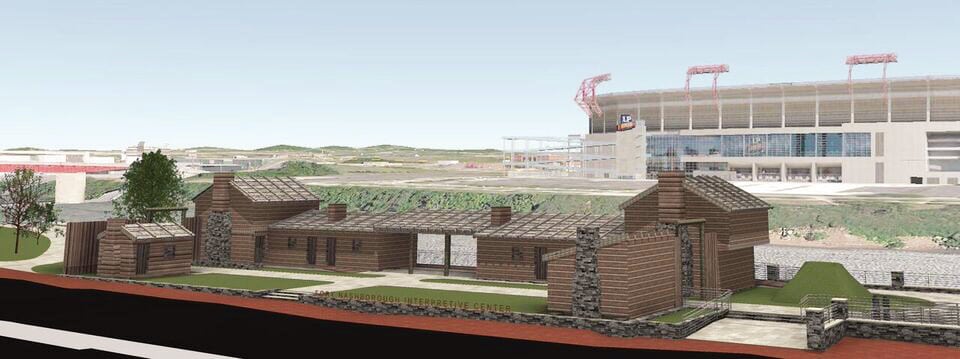Twice in the last three years I have written about Middle Tennessee historic sites that were in danger of being lost for good: Fort Nashborough, in Nashville, and the original site of the Highlander Folk School in Grundy County.
Today, there are tangible efforts to restore both sites. Both plans are connected to David Currey, a designer of historical interpretive sites who also used to be chairman of a nonprofit organization called the Tennessee Preservation Trust.
First for Fort Nashborough: As many of you know, a replica of the original frontier station on the Cumberland River in downtown Nashville was built in the 1930s. It was called Fort Nashborough, one of the names by which the frontier settlement was known.
The replica of Fort Nashborough was one of Nashville’s notable tourist attractions for half a century. Tens of thousands of school kids visited it on field trips. However, the Metro Nashville Parks department eliminated the full-time director position there in the late 1980s. After that, the fort fell into disrepair and became more of a homeless shelter and less of a destination for tourists and field-trippers.
Five years ago, the fort was closed to the public. At that time, Nashville’s leaders said they would come up with a plan to replace it with something similar.
The city hired Currey to come up with a plan for the site. Currey’s plan called for a series of structures that would represent the various shelters and stockades built by Middle Tennessee’s early settlers, a section that would pay homage to the Native Americans who lived in the area at that time, a classroom facility, restrooms and more.
“It is important for people to remember that the original fort has been gone since the first part of the 19th century,” says Currey. “We were trying to create more of an interpretive center that included more authentic structures than the ones that had been there since the 1930s.”
Construction of Currey’s plan was to begin in late 2014. But other than tearing down the old Fort Nashborough, Nashville has done nothing. While the city found money for a new concert amphitheater, a minor league baseball stadium, a dog park and other venues, the former site of Fort Nashborough remains an empty space surrounded by a chain-link fence.
In recent months, several people and organizations, including the Daughters of the American Revolution and Historic Nashville Inc., have made it clear to new Nashville Mayor Megan Barry that they would love to see Fort Nashborough brought back. As I write this column, I’m not certain whether the new mayor will respond to these requests and embrace a project her predecessors neglected. But I believe she will.
I believe Currey’s Fort Nashborough project will be completed in 2017. I am also optimistic that the city will form a “friends” group that could ensure the place thrives and has regularly scheduled events.
Meanwhile, about 90 miles southeast of Nashville sits the former site of the Highlander Folk School. In February 2013, I wrote a column about how Highlander was, in the eyes of many people, the birthplace of the civil rights movement. It was a place where, in the 1940s and 1950s, people such as Martin Luther King Jr., Rosa Parks, Ralph Abernathy and Pete Seeger met and helped plan — and inspire — the civil rights movement that followed.
I also reported, however, that the original site of Highlander was abandoned and being sold by the Christian ministry that had owned it for several years.
Since that time, a nonprofit called the Tennessee Preservation Trust (TPT) raised enough money to secure title to about six acres of the original Highlander site, including the old library building, two other old structures and some of the land fronting the pond there. The TPT doesn’t have a concrete plan for what it will do with the site or even exactly how it will pay off the loans it took out to secure the properties.
“We are working on a plan,” says Michael Birdwell, current vice chairman of the TPT. “We have a lot of people we need to make connections to, including folks from the local area as well as those at the existing Highlander Education Center in East Tennessee.”
“One thing that has made this all the more challenging is that many of the people critical to this effort have died,” Birdwell says. “George Barrett, John Egerton and John Seigenthaler, for instance. All three of them were very excited about this. But all three of them have passed away.”
For now, TPT volunteers are trying to keep the property cleaned up and planning some public tours of the site. See the schedule at www.tennesseepreservationtrust.org.
“It is our dream that it could tell the story of not only Highlander but also the social justice movement in the entire South,” Currey said. “But we have a long way to go.”



